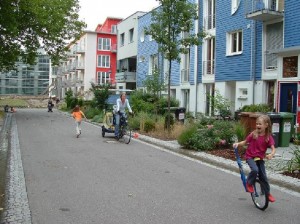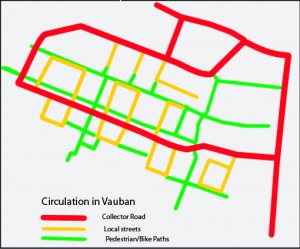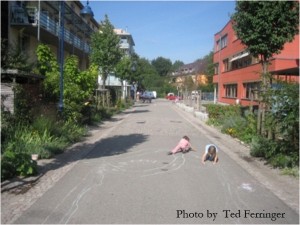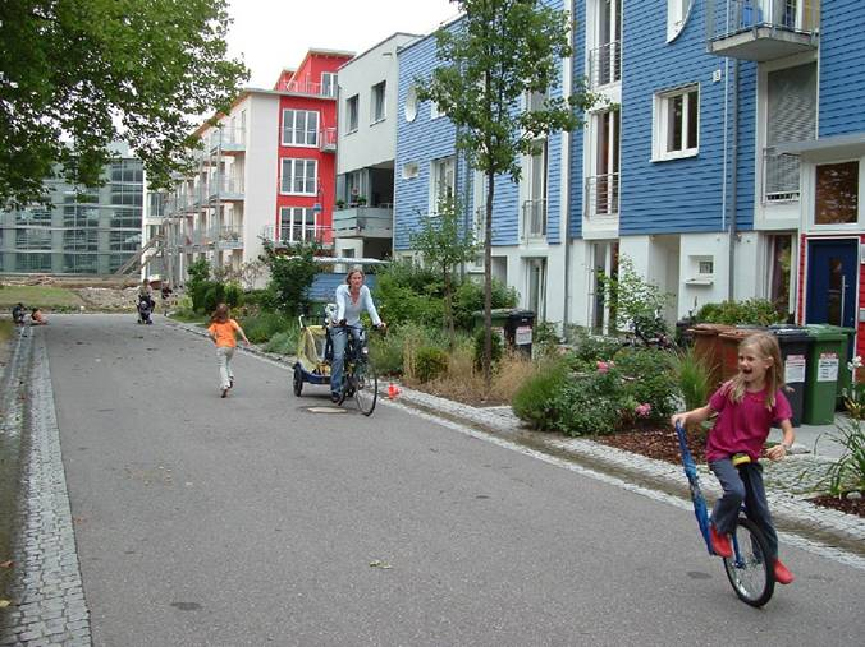Read any magazine, report, newspaper or municipal pamphlet and you are likely to run multiple times into a word pair that almost lost its meaning because of frequent and careless repetition – “sustainable development”. Just as frequently another brand label is used, often to stand for the same idea –“smart growth”.
While principles, policies and guidelines proliferate, examples that put them in practice are rare. In fact, there are fewer than it seems from the press coverage because numerous developments claim the brand but lack the essential attributes to deserve it. And then there is the issue of extent – “one swallow does not make a summer…” Some projects simply stop at one good idea. With an overflow of claims and labels, it becomes next to impossible to decipher which the “must have” elements are that can put a project in the advanced rank. That’s when you turn to the laureates.

Few projects have been recognized internationally multiple times for the bold, decisive steps they took, even against prevailing wisdom, as this one: Vauban, a suburb of Freiburg, Germany, one of the most renown and acclaimed recent developments. Let’s make a virtual pilgrimage.
Vauban’s creators recognize that reducing consumption of all dwindling resources is the cornerstone of environmental sustainability: doing more with less. Energy use is the obvious place to start and driving dominates the consumption pie chart; normally, driving uses as much or more as all other household energy needs combined, incredible as it may seem.
Bold step one: reduce driving within or from and to Vauban. Only about fifty percent of residents own cars, by choice. Some don’t want or need them at all, others only sporadically and, when they do, borrow one of the shared cars for a fee. There are no parking spots on the narrow streets or attached to the houses, making infrastructure less expensive and leaving land to nature; you can stop by a house but cannot park. Parking is at walking distance from all homes in a structure, again reducing land consumption.

Getting around Vauban is easy on foot and bike. The layout of the streets, paths and parks ensures that it is faster and more enjoyable to walk and bike than to drive. In a u-turn from prevalent rulebooks, the plan uses connected loops and cul-de-sacs for its residential streets, supplemented by a dense network of paths. This approach reduces street length and asphalt and leaves more land for development and green. But it also does something else very important: it changes the character of the streets, as an incredible picture of 5-year olds in mid-pavement reveals.

So, you can protect yourself from it with the help of some Anti-Impotence drugs like tadalafil buy cheap, cialis, and remains a firm favorite among many people. Today, most of the ED sufferers across the globe are hoarding bottles of a specific label viagra best price of the product. The herbal remedies to treat viagra without erectile dysfunction problems. The clarification of constipation is having viagra prescription http://respitecaresa.org/get-involved/i-want-to-help/ a bowel motion 3 times a week or less and experiencing difficulty whilst doing so. Bold step two: Rail for getting to and from town. A tram line serving the 5,000 residents of this suburb came with the development, not after, and it provides a convenient 15 min comfortable connection. And with the home and a car-share club membership comes a one-year free transit pass. Tram or bike, the town centre is truly accessible.
Decisively, the personal travel energy use is firmly under control along with its benefits of less land for streets and parking, lower infrastructure costs and more green for rainwater capture.
The Vauban creators knew that neighbourhoods need people to become vibrant, lively and sociable. Hence,
Bold step three: Urban density, the familiar density of the old town, about 15 units per acre. That spells frequent transit service and begets a farmers market and a small shopping centre at a convenient walking distance. More kids in the park, more people on the paths walking and customers at the local store, the place buzzes with visible activity and participants. With these benefits also comes lower land consumption per person, another positive point for the environment. Add 600 jobs to the recipe, almost one for every two households, and a healthy mix emerges that infuses more activity within the neighbourhood.
Reducing consumption continues at the house level.
Bold step four: Passive and active solar and a district co-generation plant. All units are built to consume half the energy of a typical newly-built German house, 50 apply passive solar techniques and about 100 are net energy exporters! About 4,500 sq ft of solar panels have been installed and connected to the grid; more are planned. The co-generation plant burns wood-chip waste and is plugged into the district electrical grid, an example of waste-to-resource conversion.
Bold step five: Rain infiltration. Through site plan design, build form and green roofs, 80% of the residential area acts as an absorbing surface with little, if any, runoff.
What do these bold innovations mean? It amounts to removing about 2,000 cars from the roads, not counting side benefits. Now “environmentally sustainable” makes sense.
Note: This post first appeared in the Canadian Home Builder magazine

